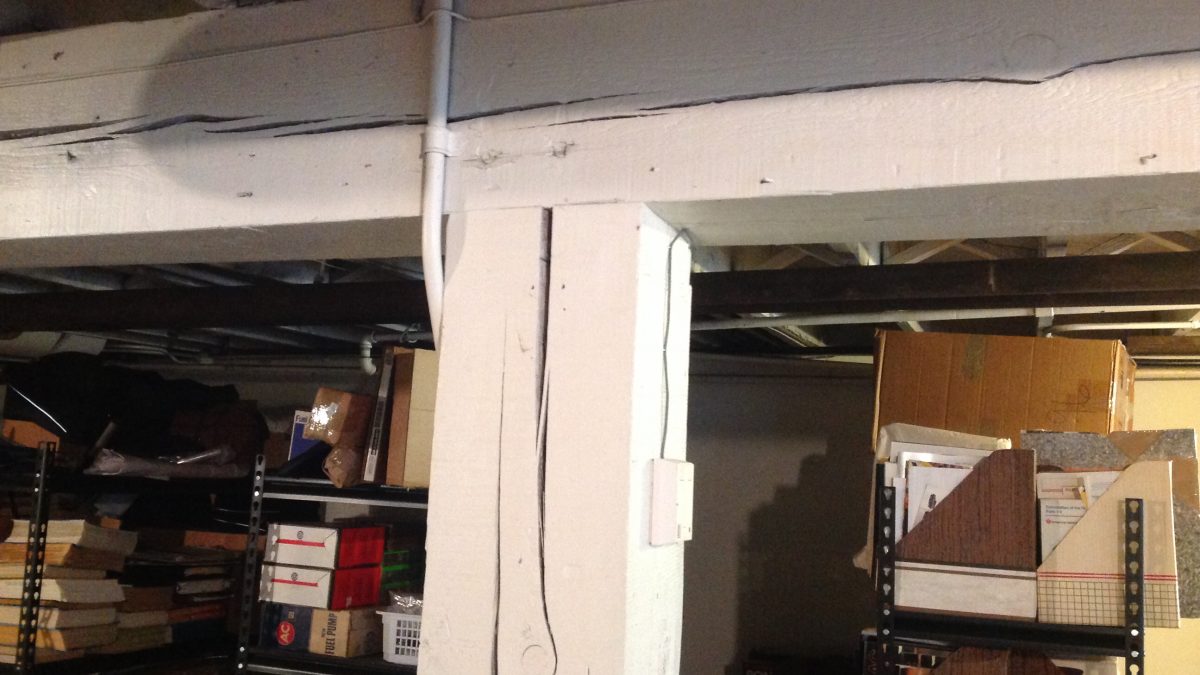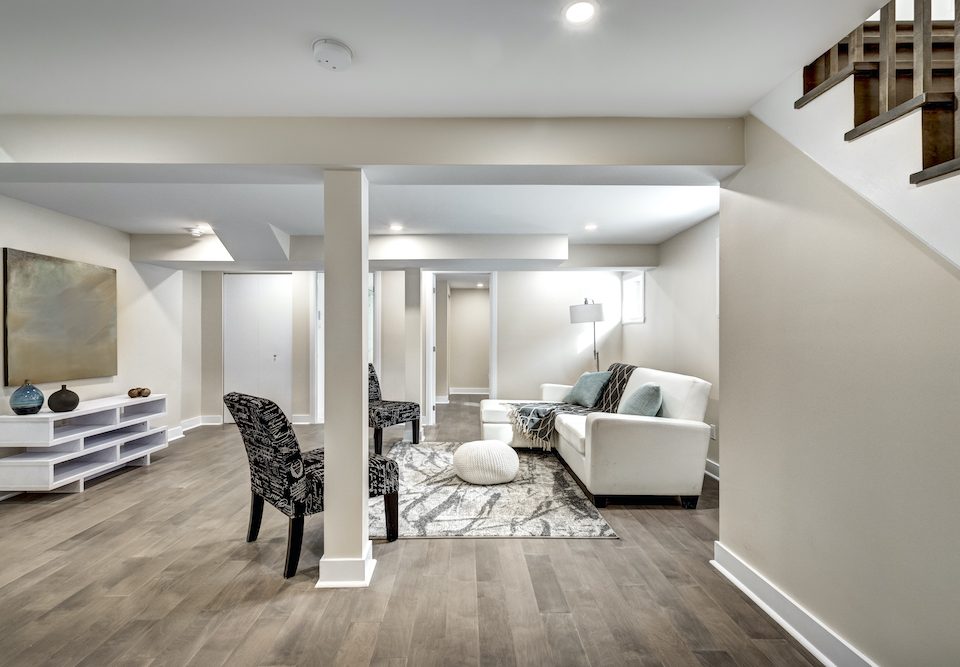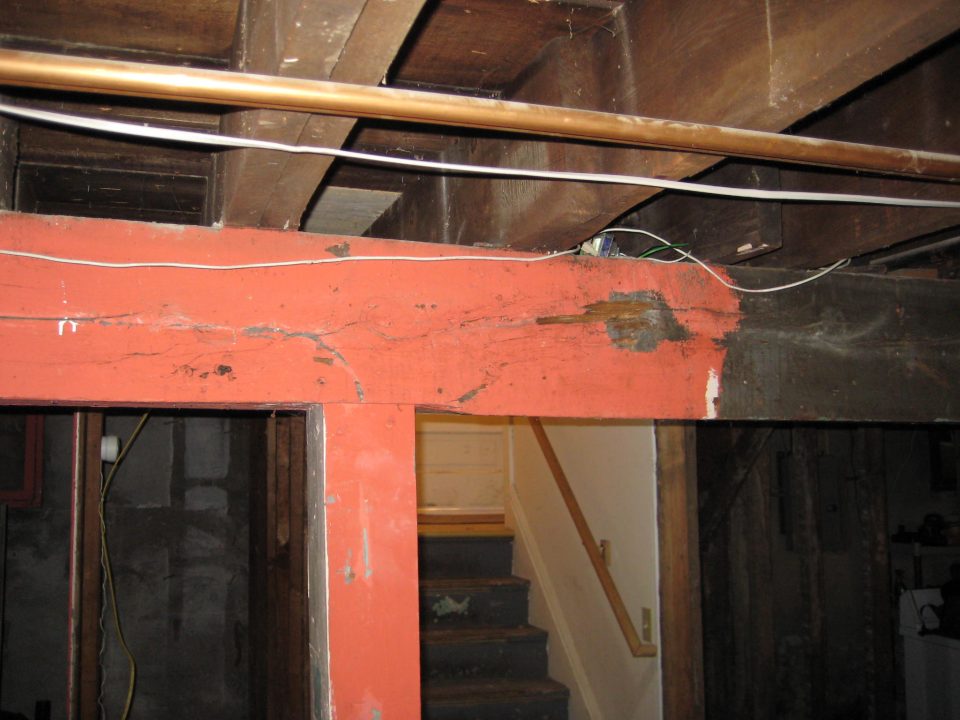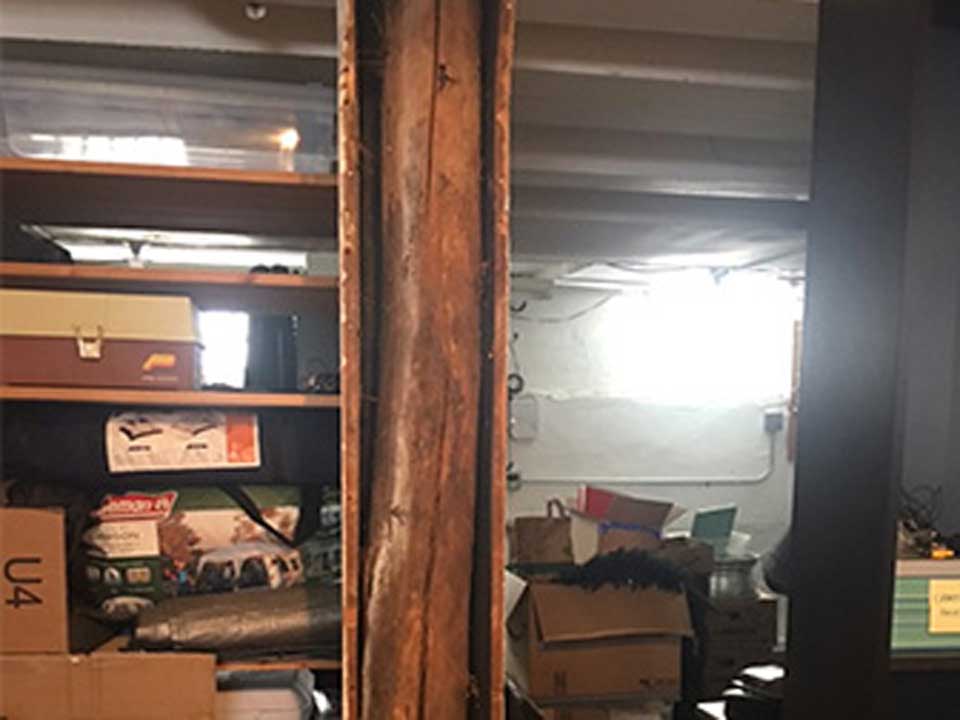WHEN TO REPLACE YOUR BASEMENT POST AND BEAM SYSTEM

Start At The Bottom
August 14, 2019
What Materials Are Used To Replace My Post And Beam System In My Basement?
February 9, 2021WHEN TO REPLACE YOUR BASEMENT POST AND BEAM SYSTEM
Nearly all wooden post and beam systems in basements develop cracks after homes have aged 100+ years . We often see cracks wide enough for a thumb to be inserted. These cracks are often the main point of concern when homeowners contact us. Here are a few commonly asked questions:
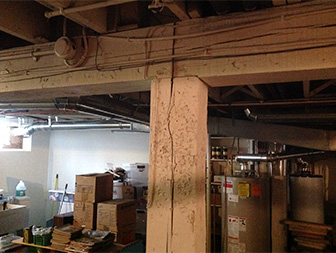 What causes these cracks?
What causes these cracks?
Posts (or columns – same thing) are vertical bearing elements structurally. That means that when they carry a load compression travels downward through them transferring that load to the ground.
Imagine you are pressing down on a swim noodle set vertically. The foam it is made of will compress slightly and then start to bend or “deflect”. Under continued pressure the noodle will bend further and then buckle. This is a lightweight simulation of how your posts are performing.
Your posts, under heavy load, slowly fail over time. Wood failure is progressive and continuous – unlike steel and concrete. After years of slowly failing and bearing heavy loads your posts attempt to deflect or bend in all directions – causing cracks. These cracks eventually cause the posts to perform as if they were two smaller pieces of wood – greatly diminishing their capacity.
The same process occurs with beams (posts are vertical, beams are horizontal). Beams that are spanning between two posts rather than set vertically are under different types of loading, but the principal remains the same.
How serious are these cracks?
The engineering standard for a failed post or beam is the presence of a substantial crack which is longer than the depth of the beam or the width of the post. Cracks that meet these criteria are present in many homes. It is good to have a professional evaluate whether this represents a threat to your house’s integrity.
A good measure of the seriousness of post and beam failure is the presence of out-of-level conditions in the floors above. Most of this “settling” is not a collapse hazard. But it is an aesthetic problem and eventually becomes a pocketbook problem when you try to sell your house. Many of our post and beam replacements are caused by buyer resistance to sloping floors. Even if the sale of your house is not prevented most sellers will reduce the amount they are willing to pay if they see sloping floors. These reductions are often in excess of the actual cost of repair since most people do not have a familiarity with structural repair cost. We have seen buyers get a $40,000 reduction in their purchase price only to hire us to fix the problem for $15,000. There is a scare factor involved and you don’t want to be on the wrong side of this transaction.
So what do we do?
Prior to remodeling it is good to call in a professional to assess the levelness of the area to be finished and the structure below it. We are often called in by homeowners who become alarmed watching their kitchen remodelers cut cabinets and trim out of square to make them fit the room. Unfortunately, once ceramic floors, granite countertops and out-of-square cabinets are installed it is difficult to change the geometry of the room by lifting floors.
At Brad Scott Construction we are able to reverse most of the settling to the extent that the sloping and out-of-level conditions are not visible. When reversing settling homes, installed steel and engineered lumber basement posts and beams will assure that improvements made in lifting the house will not be lost. Our installations are designed by licensed structural engineers and inspected by city code officials.

